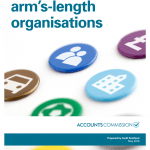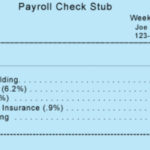Content

Their value includes the actual cost of the materials, as well as any freight or duties incurred with procuring them. The WIP inventory account is a summary of all the job cost sheets of the given accounting period. For every credit or debit that is made in the WIP inventory account, a corresponding credit or debit must be made in one or more job costs sheets. At the end of the accounting period, the WIP inventory balance should equal the total of all of the job cost sheets. A piece of inventory becomes labeled as work-in-progress when raw material combines with human labor.
To accurately determine your current WIP inventory value, you need to first determine the cost of manufactured goods. To determine your COGM, you will need to add your beginning WIP inventory with your total manufacturing costs and then subtract the ending inventory. Firstly, when raw materials and components are consumed and transformed in manufacturing processes, they gain value by incurring labor and overhead costs. Due to this, WIP inventory has some separate accounting considerations, tracking WIP value is crucial for a company’s financial health. Any raw material inventory that has been combined with human labor but is not yet finished goods inventory is work in process inventory.
How to optimize your inventory management (& more) with work in process inventory
Shorter WIP Stage → The quicker the inventory cycles out (i.e. as part of the cash conversion cycle), the more free cash flow there tends to be since the cash is not merely sitting as inventory. Generally, most companies strive to reduce the amount of time that inventory spends at the work in progress stage. WIP stands for “work in progress” and refers to any partially complete inventory not yet ready to be sold to customers. Harold Averkamp has worked as a university accounting instructor, accountant, and consultant for more than 25 years. He is the sole author of all the materials on AccountingCoach.com. In a perpetual inventory system, when the goods in WIP are completed, their cost will be moved from the WIP account into the Finished Goods Inventory account.
They may calculate it in the cost of the labor required to assemble the hairbrushes, the operation of the machinery required, and more. Most eCommerce companies depend on a manufacturer or supplier for their sellable goods. It’s crucial to understand the procedure and flow of WIP inventory.
How Is Work-in-Progress Calculated?
This inventory is found on a manufacturing company’s balance sheet. This account of inventory, like the work-in-progress, may include direct labor, material, and manufacturing overhead. Therefore, the total value of all unfinished products is considered Work-in-Process inventory for accounting purposes. Although you can’t sell these goods, include them as an asset on your balance sheet. WIP inventory should also be an asset when determining your company’s value to attract investors or obtain funding.
- Their value includes the actual cost of the materials, as well as any freight or duties incurred with procuring them.
- Adam received his master’s in economics from The New School for Social Research and his Ph.D. from the University of Wisconsin-Madison in sociology.
- Cray Cray just started its first year of operations, and you were hired directly by the President.
- Since WIP inventory takes up space and can’t be sold for a profit, it’s generally a best practice for product-based businesses to minimize the amount of WIP inventory they have on hand.
- Thus, managers can tamp down or increase production based on the availability of materials in bins on the factory floor.
A software system helps you avoid making errors and helps identify any discrepancies or errors faster and more efficiently. There is a risk of inventory becoming outdated, especially when the WIP inventory is more than what the market could demand, especially for companies work-in-process inventory account dealing with seasonal goods. This is because it needs to be produced to meet anticipated demand. Continuous production of goods could lead to a pile-up of inventory. Confusingly, some sites list the terms as interchangeable, just used in different contexts.
How Is WIP Information Useful?
It is often deemed the most illiquid of all current assets and, thus, it is excluded from the numerator in the quick ratio calculation. WIP inventory refers to goods that are in production and not yet a finished good. On the balance sheet, WIP inventory is aggregated into the inventory line under current assets along with raw materials and finished goods. Amount of work-in-process inventory available at the end of the account period. The balance represents manufacturing costs of unfinished production at the end of the period.

It doesn’t take into account waste, scrap, spoilage, downtime, and MRO inventory. In order to achieve 100% accuracy, you’d need to itemize every factor in the production process. That said, it’s better to have some grip on your WIP inventory than none at all. The WIP figure indicates your company has $60,000 worth of inventory that’s neither raw material nor finished goods—that’s your work in process inventory. Compute the cost of goods manufactured in a fiscal period using cost data relating to the work in progress account.
Once the manufacturer starts the machining and production process, these raw materials can’t really be considered raw anymore. Now they a small amount of work done on to them, but they are not completely finished and ready to be sold. That is why materials that are in the production process but not fully finished are called work in process inventory. You must account for it on your company’s balance sheet to avoid an undervaluation of your overall inventory. To accurately determine the value of your inventory for tax purposes, it is best to track WIP inventories.

In accounting, a work in progress account is an inventory account that includes goods that are in the process of being produced but are not yet finished. This account represents the costs of resources used but not yet turned into completed products. It is one of the inventory accounts commonly used to track the flow of costs in a production process. Other common inventory accounts include raw materials and finished goods. Inventory accounts are reported as current assets on the company’s balance sheet.
What is the accounting entry for work-in-progress?
A work-in-progress journal entry is a record that accounting professionals use to document current assets on a company's balance sheet. The items in this journal entry don't include any raw materials or finished goods.

